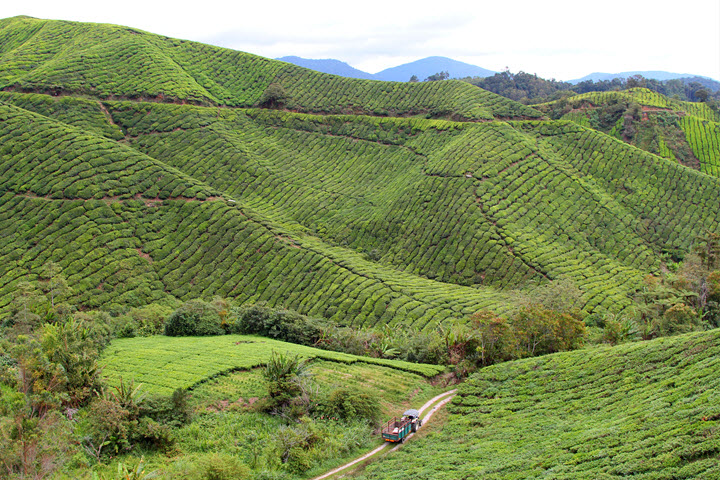
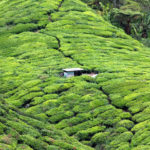 KUALA LUMPUR, Malaysia
KUALA LUMPUR, Malaysia
In a country where eating is more or less the national sport, tea is prominent on the nation’s menus — lots of it.
Tea has been a traditional beverage for Malaysians for more than 150 years, particularly among Chinese immigrants although exactly when the habit took hold is unclear. But observing just a few minutes of Malaysian television makes it clear that tea, and not coffee, “puts the oomph” into Malaysian step.
The word for tea in Malay is teh, derived from Hokkien, the dialect spoken in the Chinese province of Fujian, and by many Malaysian Chinese. Confusing things, in Kuala Lumpur the most widely spoken Chinese dialect is Cantonese, in which the word for tea is cha.
When you ask for a cup of tea in Kuala Lumpur, for the most part, you will get it hot, strong, milky and sweet. Teh tarik (meaning pulled tea) is prepared using a special technique where the mixture of strong black tea and condensed milk is pulled back and forth between two vessels. Served hot or cold, this fortifying beverage is a staple on the menu of most Malaysian kopitiams, or cafes.
Sweet black iced tea (teh o ais) is also popular.
The exception is “Chinese tea”, where you get a pot or glass of loose leaf tea. Many Chinese eateries will have a selection of leaf types to choose from, such as jasmine green tea. Cafes, where you can sample rarer and more expensive varieties, are much less common than in China.
However, Kuala Lumpur is well served through dedicated tea shops where you can buy everything from delicate Yixing teapots to exquisite whole-leaf tea. Naturally, most of the best are located in Chinatown with Kean Guan, Purple Cane Tea House, Qiu Xiang Tea, and Taetea just a stone’s throw from each other.
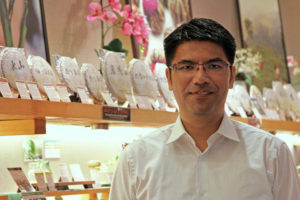
Hojo Tea, a 10-minute taxi ride away at the impressive Garden Mall, is worth a visit if you are interested in naturally farmed teas from Yunnan as well as curated teas from other tea growing regions, such as Japan. Owner Akira Hojo is knowledgeable in all things relating to the leaf.
“In Malaysia, everyone appreciates tea,” says Hojo. “But preferences differ greatly.”
He explains: “About 150 years ago, most of the Chinese who migrated to Malaysia were extremely poor. Migrants were given a gift of tea from the government to take with them on the journey. This tea was called Liu Bao Cha, a kind of traditional green tea.
“As the emigrants struggled to establish their new life, this tea was cherished. But due to the climate, the tea became oxidized and moldy. And yet it was still revered. Today many older Malays still look for tea with a similar pungent aroma and taste.
“However, for the younger generation food choices have become globalized so it is easier for them to enjoy the good tea,” said Hojo.
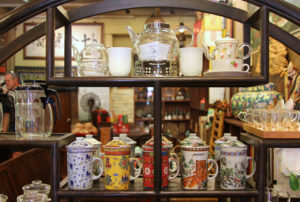
Hojo says Malaysia’s astute tea drinkers prefer raw puer, followed by green and oolong teas. “In our shop, sales of black tea (Chinese red tea) are poor. This is for two reasons. In a hot climate, you wouldn’t enjoy a tea with high fermentation. So the teas with the lighter fermentations are more popular. Second, some Malaysian Chinese look down on black tea as they believe it to be poor quality – a cheap tea that they can drink at any restaurant. Often they will smell the tea and think it smells the same as Teh tarik, which many find too strong.”
As for locally grown teas, Hojo says most of the tea produced is commercial-grade delivered via tea bag or Teh tarik. “Not many Malaysians will drink loose leaf (higher grade) tea grown in Malaysia, but they will buy this tea for family and friends when visiting local gardens,” he said.
So where exactly are they?
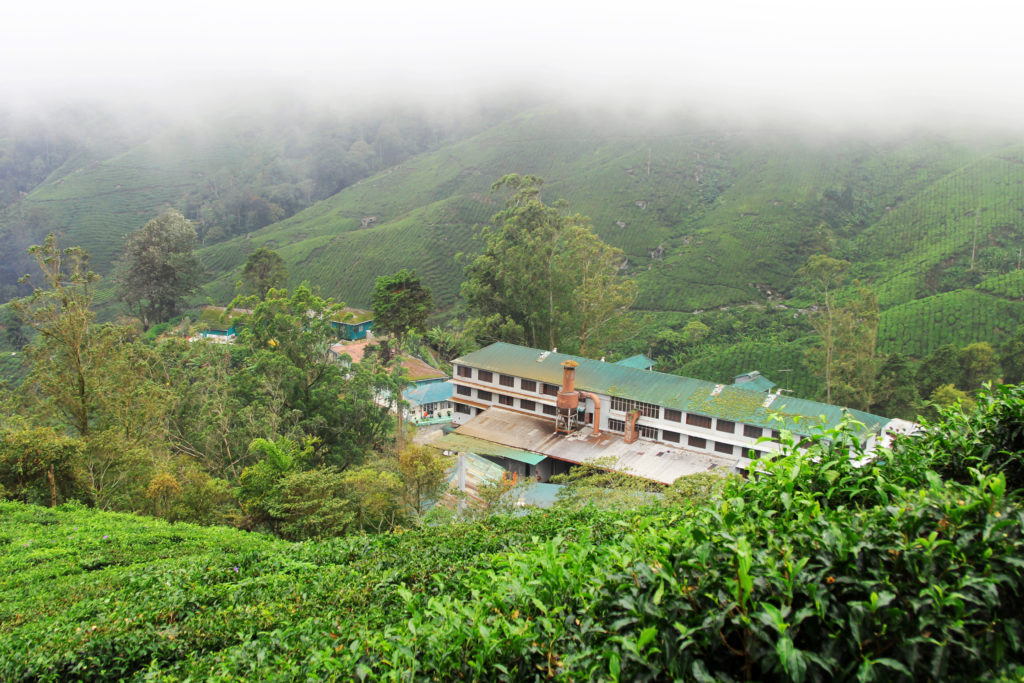
Malaysia’s tea gardens
Malaysia primarily produces black tea grown in the Cameron Highlands, a journey of three and a half hours by car from Kuala Lumpur. Private cars can be arranged from any hotel for a minimum of $200 round trip.
The highlands are dubbed Malaysia’s “Green Bowl” with most of the region dedicated to agricultural farms, vegetable and fruit orchids, as well as vast tea plantations as far as the eye can see.
Tea was introduced in Malaysia in 1929 by a British businessman, J.A. Russell, who saw that the demand for tea around the world remained constant even throughout periods of economic malaise such as the United States’ Great Depression of 1929. He purchased some freehold land near the town of Ipoh (which is known for its high limestone content) and together with A.B. Milne, an expert tea planter from Ceylon, he pioneered the breakthrough of the tea cultivation in the country.
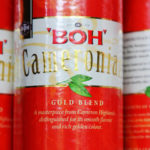 BOH Plantations (BOH stands for “Best Of Highlands”) is today the largest highland tea producer with nearly 1,200 hectares of land dedicated to tea production.
BOH Plantations (BOH stands for “Best Of Highlands”) is today the largest highland tea producer with nearly 1,200 hectares of land dedicated to tea production.
The company owns four tea gardens — the original Habu Tea Garden, Fairlie Tea Garden, Sungai Palas Tea Garden, and Bukit Cheeding in Selangor. Together, they produce about 4 million kilograms of tea every year, accounting for about 70 percent of country’s total tea production. Of that, 90 percent is reserved for local consumers.
Depending on the weather, tea is produced year round and is harvested every three to four weeks when the new shoots flush.
The tea is mostly processed in a semi-orthodox manner, with shears being used by individual pickers on the slopes and a two-man hand-held machine (assisted by winches) or raised tractor harvester in the plains. Once harvested, the tea is machine processed as black or green tea and then transferred to Bukit Cheeding for packaging. A portion of the harvest is processed in the traditional orthodox fashion, but the market for these premium leaves in Malaysia is small.
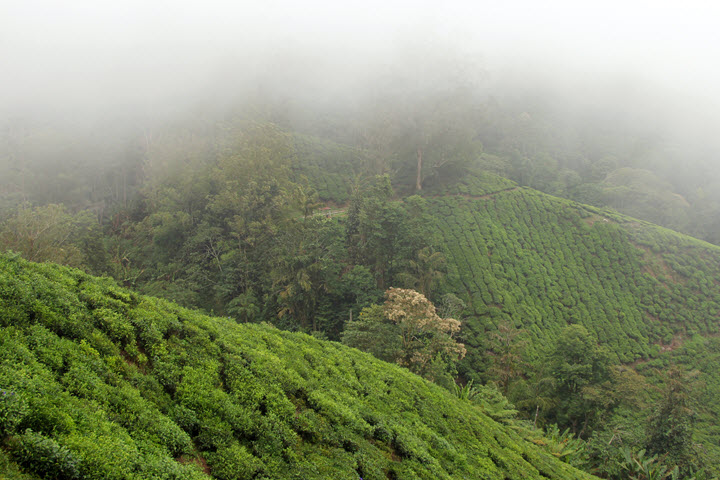
Of the four estates, Habu is the more picturesque while Palas is well-deserving of its name with the focus on accommodating the thousands of Malaysians who travel up the highlands to escape the heat of the lowlands, enjoying panoramic views while quaffing tea and cake.
Other tea producers in the highlands are Cameron Highlands Tea Plantation (Bharat Group) and Blue Valley Plantation, which also produce semi-orthodox teas.
In terms of flavor and intensity, Hojo says the whole leaf teas (such as “garden” and “gold” brands) are usually a light golden color, medium-bodied and sweet, while the lower grades have a darker color and result in a stronger, robust infusion. Green teas have been introduced in recent years and herbal and fruit teas are becoming widely available.
The teas are not organic, despite the worldwide trend towards sustainable farming. Hojo says this is not important to Malaysians. “The concept of organic tea has not really been introduced and no one cares. This is because most of the food in Malaysia comes from China, where the origin and ingredients may be questionable. That includes tea. So they think, “Why do we need to worry about tea?”
Not enough “oomph?”
According to Euromonitor, Malaysia produces just 0.45 percent of the world’s tea. But, despite any constraints, the prospects for the Malaysian tea industry are bright. Tea consumption in Malaysia is projected to grow over the next decade. Forecasts show that the future of the country’s tea industry lies in the domestic market – which includes restaurants, cafes, and consumers who purchase tea from the supermarket. The highland’s tea producers have not yet fully tapped the potential of this market, which still relies heavily on imports from India or Indonesia.
Hojo says two things need to happen for the tea industry to thrive. First, more small tea gardens need to be established: “Indonesia has seen the rise of specialist tea holdings, but in Malaysia the road to tea farming is not an easy one,” he says. “The farmer can probably make more money from growing vegetables and flowers. For tea, the farmer needs to build a factory and it is harder to make money. Regional cooperatives might help the tea industry to grow.”
Second, many leading manufacturers in China, India, Kenya, and other emerging countries (such as Nepal) are tied in a race offering a variety of different tea lines and qualities. But Malaysia is very relaxed about expanding its tea potential. “In 20 years, little has changed,” he said.
The use of old technology and poor farming methods means overall quality is not as good as it could be. “What is interesting is that up in the higher regions the weather at night is cold while in the daytime the gardens have strong sunshine. With these conditions, the tea should be creamy. But because the gardens are over-fertilized [note the bright green color], the tea does not reach its potential,” he said.
On a positive note, it is evident tea plantations surpass any fruit or vegetable farm as the signature vista of the highlands. There seems to be no doubt about tea’s ability to attract local tourists to the region. With international tea tourism on the rise, social media campaigns or even special tourism programs could go a long way to boosting the image of Malaysian tea brands abroad.